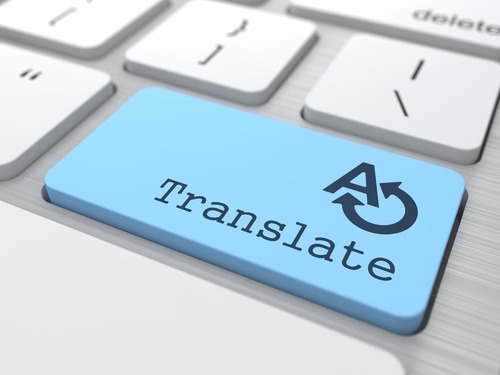It is a well-known fact, that as consumers, we prefer to purchase from websites that have content, products, prices and information available in our native language. The appeal is increased if we are able to interact with customer services and the website is culturally acceptable to us.
Your business is more likely to thrive in a global marketplace with a website that has been professionally translated and localised to suit a specific target audience, area, or region.
The following tips will assist with localising website content and creating multilingual websites for a global audience.
1. Localisation for Local Audiences
Knowing your customer should be one of the foremost points you consider when localising and translating your website.
Ask yourself the following questions, and if you can’t answer them, find a localisation and translation expert that can help you.
• Who is my target audience
• Where does my target audience live?
• What language do they speak?
• Are there regional dialect differences? (For example, in the Middle East, your Arabic audience may speak one of 9 major dialects)
• What are my competition doing with their website and what makes them successful?
• What cultural norms/differences need considering to suit my target audience?
These questions can help you create content that is appropriate and suitable for your audience – thorough research will give you a solid base for crafting a site that appeals to your customers and meets (or exceeds) their expectations.
2. Websites, Search Engines and URLs
When creating websites that are multilingual, or a separate version of your website for a specific language, it is important to consider how this will affect your existing site and if you should use language-specific URLs to ensure customers, and search engines, can find your new site or multilingual pages.
Professional language service providers can help when deciding which alternative is best for a specific region, or which will suit your requirements and budget.
Some basic advice can be found on search engine sites such as, Google, but remember, some countries rate other search engine providers so be sure to check you are using the most popular method for your preferred language and country.
3. Translation and Localisation for Optimum Website User Experience
Although we have briefly looked at localising your website for your target audience and how knowing your customer helps to create the right content, it is far more involved when localising your website in a professional manner.
Other points that should be considered include the following:
• Text expansion/contraction – some languages are more ‘wordy’ than others so require more space to say the same thing. Consider how this might affect the visual appearance of your site and consider transcreation (creative translating and recreating content) of new content if desired. If your primary site is in English then it is most likely that you’ll need to consider text expansion when translating into another language as English is generally very succinct.
• Colour and Fonts – colour is culturally specific so ensure that you can successfully ‘translate’ your brand (including logos, slogans, packaging and so on) for your new audience. Ensure all design elements are culturally acceptable and seek professional advice if you aren’t sure.
• Left-to-right and right-to-left text – depending upon which language your new website will be based in will depend upon the text direction. For example, in the UK text is written from left-to-right but if using Arabic it is from right-to-left. Consider how this might alter the appearance of your site and seek advice from a professional translation and localisation provider if required.
• Images – if a picture speaks a thousand words, selecting the right images for your translated website is vital! In some countries there are strict laws regarding images displaying the female body (such as, the UEA and other predominantly Muslim countries) so be sure your use of images abides by the law of the land. Similarly, consider how your audience will view your image within their cultural context. For example, if you are selling running shoes in the UK then a picture of someone running through a muddy forest is likely to appeal to customers but if you are selling to customers in California then a sunny beach would be more appropriate.
• Clear, concise language avoids confusion – we all interpret meaning from the words we read and this is generally in relation to our native language and culture. Ambiguity causes confusion so keep things simple, stick to familiar and consistent terminology, and avoid colloquial phrases and humour, as these can alter significantly from country to country.
Translating and localising content to ensure it is suitable for a global audience is challenging but can offer a great return on investment if completed professionally and effectively.
If you would like to know more about how Creative Word can help you reach your full potential in a global marketplace, you can contact our experts here.


Recent Comments